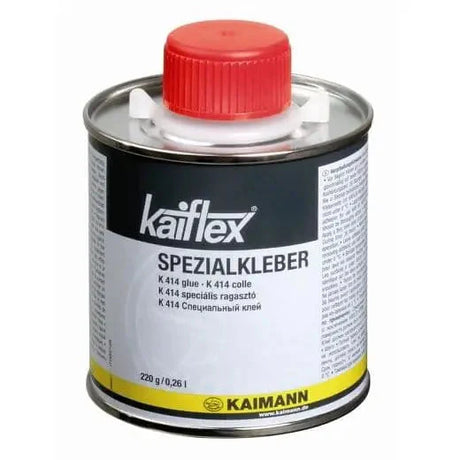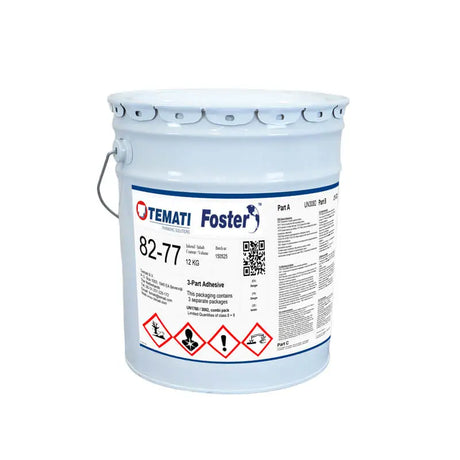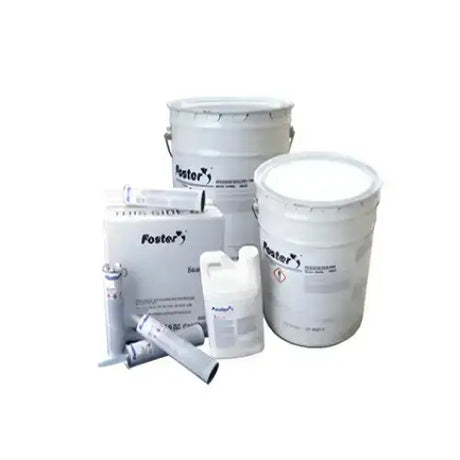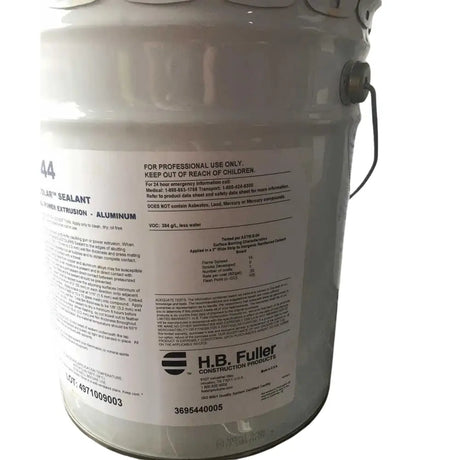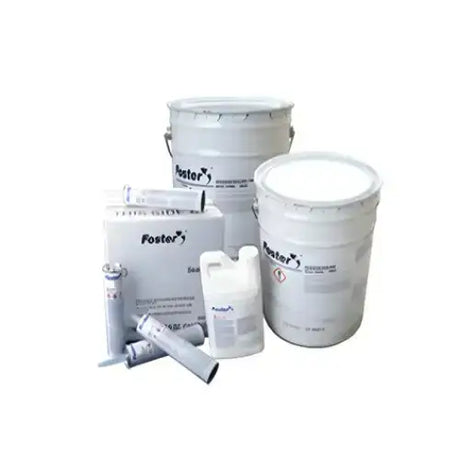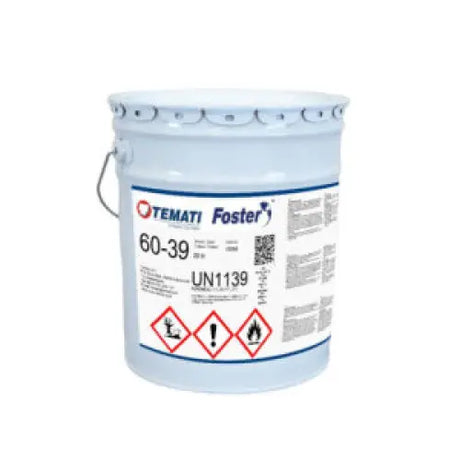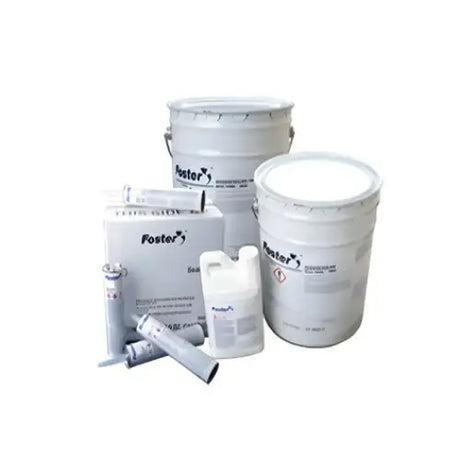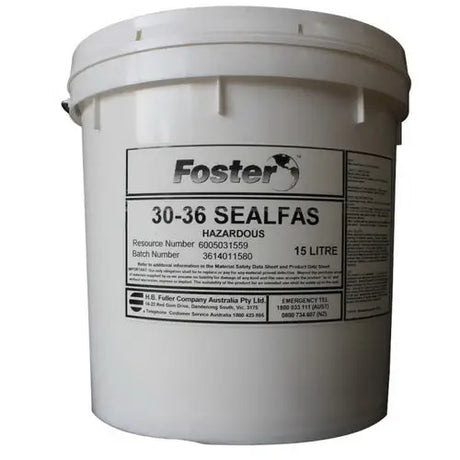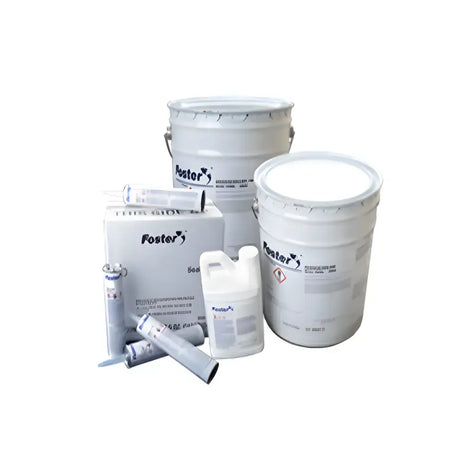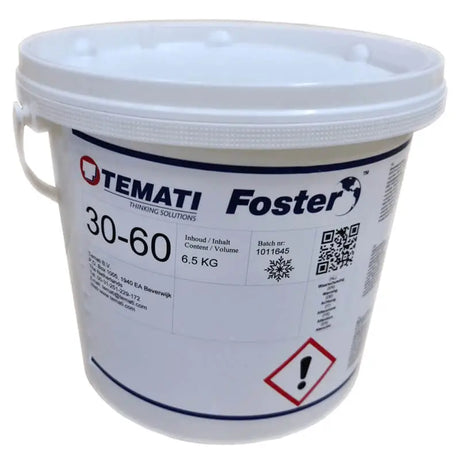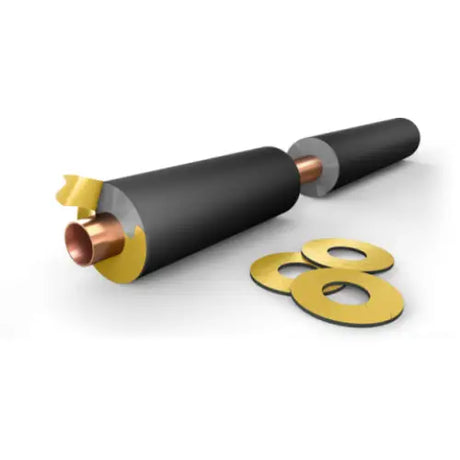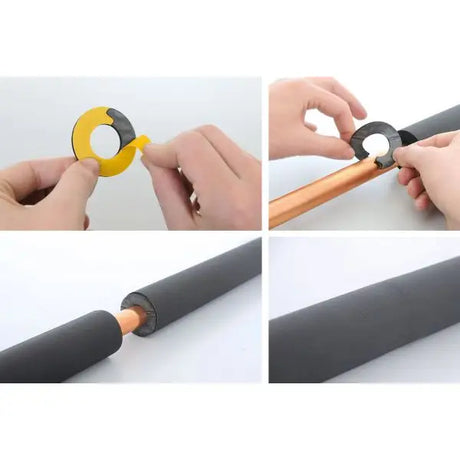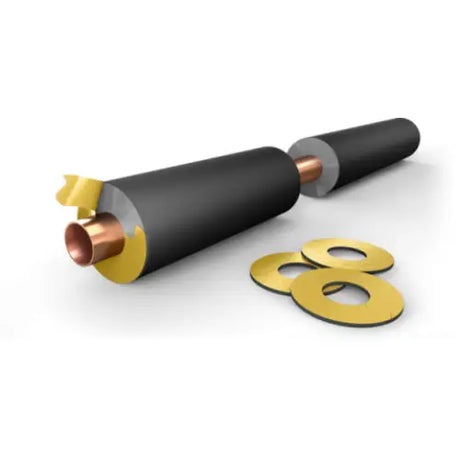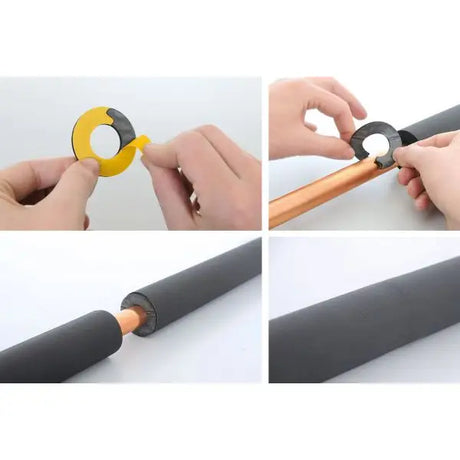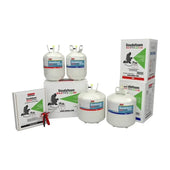In this article, we will explore the benefits and applications of heat trace and process heating systems. These systems are essential for optimising efficiency and safety in various industrial settings, from preventing freezing in pipelines to ensuring optimal temperature control in industrial processes. It's critical to choose a system that meets the specific requirements of your operation to maximise overall effectiveness and ensure you comply with industry regulations.
Key Takeaways
- Heat trace and process heating systems enhance efficiency while improving safety in industrial applications.
- Electric heat trace cables play a critical role in temperature maintenance and preventing equipment damage.
- Proper installation and regular maintenance are necessary to ensure optimal functioning of heat trace and process heating systems.
- Choosing the right heat trace solution requires consideration of factors such as voltage and environmental conditions.
- Continual innovations in heat trace technology are delivering more advanced and efficient systems.
Understanding Heat Trace and Process Heating Systems

At the core of industrial processes are heat tracing solutions and industrial heating systems. These solutions provide stable heating systems for industrial tools like vessels, pipes, and other vital equipment. Electrical heat tracing ensures that temperatures are regulated within the desired parameters, preventing the damage and inefficiencies that come with freezing or overheating.
Electric heat tracing solutions work by using heat trace cables to generate and distribute heat uniformly along the length of the pipes or equipment - an essential function in maintaining optimal temperatures.
Let us examine the intricacies of the electrical heat tracing process and its role in industrial heating systems in greater detail.
Industrial Heating Systems and Heat Trace Solutions
Industrial heating systems involve the deployment of mechanical and electrical systems. Electrical systems include heat trace cables while mechanical systems use insulation materials to prevent heat dissipation and expert installation and maintenance are required for successful industrial heating systems.
The Role of Electrical Heat Tracing in Industrial Heating Systems
Here, we examine the role of electrical heat tracing in industrial heating systems. Trace heating cables play an essential role in heat trace solutions - ensuring the maintenance of process temperatures and preventing any damage due to equipment malfunction. These cables come in two variations, constant wattage and self-regulating, both optimised to meet the specific requirements of their application.
A thorough understanding of industrial and electrical heating systems is imperative to ensure the optimal functioning of heat trace and process heating equipment. We'll delve into the types, components, and benefits of heat trace solutions in our upcoming sections.
Types of Heat Trace Systems
When it comes to heat trace systems, there are various types available that meet different industrial needs. The most common are pipe heating systems and trace heating solutions. Both come equipped with electric heat trace cables that provide efficient temperature maintenance across pipes or equipment. This uniform heating helps improve energy efficiency across a range of industrial activities, contributing to long-term savings.
| System Type | Description |
|---|---|
| Pipe Heating Systems | Provides uniform heating along the length of a single pipe. Ideal for environments where both freezing and overheating can be a concern, such as in petrochemical plants and other similar applications. |
| Trace Heating Solutions | Usually installed in a long, continuous line, these solutions utilize heat trace cables to provide uniform temperature control across large lengths of pipes or other types of industrial equipment. |
| Industrial Tracing Systems | A third category of heat tracing solutions, industrial tracing systems feature a pre-engineered, operating system that ensures the continuous, precise monitoring and control of the optimum temperature for processes across large industrial applications. |
The type of heat trace system required for a given industrial application depends on various factors, including the environment and the specific needs of the process equipment. At Insulation & More, we provide expert advice on choosing the most efficient, cost-effective, and suitable heat trace system tailored to the specific needs of each application. We offer top-of-the-line pipe heating systems, trace heating solutions, and industrial tracing systems designed to meet all your heating needs, from the initial installation to long-term maintenance needs.
The Function of Heat Trace Cables
Electric heat trace cables are vital components of a heat trace system. These cables provide the necessary heat required to maintain process temperature and prevent freezing, ensuring there are no interruptions to operations in industrial settings. These cables can either be constant wattage or self-regulating, depending on the specific needs of the application.
For example, constant wattage heat trace cables are ideal for high-temperature maintenance, as they maintain a consistent heat output regardless of ambient temperature fluctuations. On the other hand, self-regulating heat trace cables adjust their power output according to temperature variations, making them perfect for maintaining low temperature or freeze protection in poorly insulated areas.
Understanding the application's specific heating demands and selecting the correct type of trace heating cable is critical to achieving optimal results. For instance, when installing heat trace systems for pipes, selecting the right cable's diameter is crucial. A cable with a smaller diameter will have a lower thermal output in comparison to a larger one.
Furthermore, proper installation of heat trace cables is essential to ensure they function optimally. Incorrect installation may lead to excessive heat, which could damage the cable or equipment, or insufficient heat, which may lead to freezing and interrupted operations. It is therefore crucial to engage the services of qualified professionals to handle the installation process to guarantee correct placement and electrical connections.
Benefits of Heat Trace and Process Heating Systems
We understand that efficient and safe operation is a priority for any industry. That's why we recommend heat trace and process heating systems to optimize your industrial processes. These systems offer several benefits and advantages, including:
| Benefits | Description |
|---|---|
| Efficient Temperature Control | Heat trace systems ensure optimal temperature maintenance, helping to reduce energy waste and enhancing efficiency. By maintaining consistent temperatures, you can achieve better performance and minimize downtime. |
| Improved Safety | Preventing freezing or overheating of pipes, vessels, and other equipment with process heating systems ensures that your operations run smoothly and safely, as it reduces the risk of equipment damage or workplace accidents. |
By controlling the temperature of your processes and equipment, you can not only enhance efficiency but also keep your workplace safe. Heat trace and process heating systems are a smart investment to improve your operations.
Components of Heat Trace Systems

For a heat trace system to function optimally, it requires several vital components. The two main components critical to the efficient operation of the system are digital thermostats and pipe insulation.
Digital Thermostats
Digital thermostats are responsible for monitoring and regulating temperatures in the piping system, ensuring a consistent temperature and preventing overheating or freezing. They provide precise and reliable temperature control, resulting in optimal energy usage, increased efficiency and reduced downtime. By using digital thermostats, industrial processes enjoy constant monitoring, which translates to minimized human intervention and effort.
Pipe Insulation
Pipe insulation is crucial to heat trace systems for it retains the heat necessary to maintain process temperatures. Adequate and appropriate insulation helps reduce heat loss, making the system more efficient and cost-effective. Proper insulation lowers energy consumption, reducing the overall carbon footprint of the industrial process. It also protects the pipes from external environmental fluctuations, preventing pipe bursting and ensuring operator and product safety.
Together, these two components play a crucial role in maintaining optimal temperatures, ensuring a safely, and energy-efficiently run industrial process.
Applications of Heat Trace and Process Heating Systems
In various industrial applications, heat trace and process heating systems play a crucial role in maintaining optimal temperature for pipes, tanks, valves, and other equipment. These solutions are essential for efficient and smooth operations, ensuring that industrial equipment remains operational and working correctly.
In the oil and gas, chemical, and food processing industries, industrial heating systems feature extensively and heat trace systems are needed to help keep temperatures under control and provide consistent heat distribution, which preserves equipment integrity.
The development and innovation of heat tracing solutions make these systems applicable in many industrial processes, providing solutions for the most challenging of requirements. The following table shows an overview of some industrial applications that utilize heat trace and heated process solutions:
| Industry | Applications | Benefits |
|---|---|---|
| Oil and Gas | Oil pipelines, heavy oil tank farms, offshore platforms, fuel gas lines | Safe and effective transport of oil and gas products, energy cost savings |
| Chemical | Chemical pipes, tanks, reactors, flanges | Assured safe transport of corrosive, viscous, or hazardous chemicals, reduction of operating costs |
| Food Processing | Storage tanks, food processing and packaging areas, heat exchangers | Preservation of food quality, regulatory compliance, maximizes yield, reduces downtime, prolongs equipment life |
| Pharmaceutical | Process pipes, storage tanks, dryers, crystallizers | Product quality assurance, product yields, regulatory compliance, reduces environmental impact |
| Power Generation | Power lines, valves, condenser tubes, heat exchangers | Ensures power continuity, reduces maintenance costs, energy efficiency, and prevents downtime |
| Manufacturing | Vats, tanks, dryers, exchangers, reactors, autoclaves | Efficient and cost-effective control of process temperature, improves energy efficiency, reduces wastage, increases productivity and product quality |
It is worth noting that each industrial application will have its unique set of thermal individual characteristics, making it critical to consult with heat tracing professionals to find the most suitable solutions and maximize the efficiency of heat trace systems.
Installation and Maintenance of Heat Trace Systems
When it comes to heat trace and process heating systems, proper installation and regular maintenance are crucial to ensure their optimal functioning. At Insulation & More, we understand the importance of working with skilled professionals who can handle the installation process. These experts make sure the system is correctly placed and appropriately connected to prevent any hazardous incidents.
After installation, regular maintenance checks are essential. Inspecting cables and thermostats can help identify any potential issues and address them before they become more significant problems. Without regular maintenance, the system's performance can degrade over time, costing more money in repair expenses or loss of productivity.
Expert Installation
During the installation process, experts will carefully assess the area and requirements to determine the most appropriate system for each unique industrial application. These professionals will also ensure that all electrical connections are correctly and safely made.
Regular Maintenance
Maintenance checks must be performed regularly to ensure the system remains in optimal condition. Experts will inspect all components of the system, such as cables and thermostats, to identify potential issues and fix them before they lead to more significant problems.
Without regular maintenance, cables may become damaged or malfunction, leading to decreased efficiency or hazardous incidents. Maintenance checks can identify and address these issues, reducing losses and ensuring the system works efficiently.
Compliance with Industry Regulations
Proper installation and maintenance of heat trace and process heating systems are critical not only for optimal functioning, but also for compliance with industry regulations. By complying with safety guidelines and regulations, businesses can ensure their employees and assets remain safe while reducing the risk of fines or legal issues.
Choosing the Right Heat Trace Solution
In the selection process of heat tracing solutions for industrial heating systems, it is vital to take into account the specific requirements of the application, temperature range, voltage, and environmental conditions. This consideration helps determine the most suitable solution for each unique industrial application.
Consulting with experts in heat trace systems can offer valuable insights into available technology, potential solutions, and best-practice approaches. Our team of professionals provides comprehensive expertise in selecting the right heat trace solution for industrial heating systems.
"The best heat tracing solution will depend on individual user requirements. Pipe type, insulation, layout, voltage, and control requirements must all be considered when selecting the right system."
Advancements in Heat Trace Technology
As we have seen, heat trace and process heating systems are essential for maintaining optimal temperatures in industrial applications. Over time, advances in technology have led to more advanced and efficient systems.
Innovations in Materials
New materials are being developed, which provide superior insulation and higher resistance to extreme temperatures. For example, companies such as 3M are offering products that resist abrasion, corrosion and moisture. Such materials have made it possible for heat trace systems to operate under harsh conditions.
Control Systems

Control systems play a critical role in ensuring the optimal functioning of heat trace and process heating systems. Advances in control systems mean that the temperature of individual components can be monitored and managed remotely with precision. Modern control systems have significantly reduced energy consumption for these systems.
Efficiency and Energy Savings
Advancements in energy efficiency have improved the performance of heat trace and process heating systems. According to a study by Emerson Electric, advanced technologies have allowed these systems to operate at up to 40% energy savings.
Future Developments
The future of heat trace technology is exciting, with new developments in smart thermostats, wireless sensors and IoT integration. These advancements will enable automation and improved energy efficiency, making processes more reliable and economically feasible.
Overall, the advancements in materials, control systems, efficiency and energy savings continue to enhance the performance and reliability of heat trace and process heating systems. As companies continue to invest in research and development, we can expect to see even more significant advancements in the future.
Industry Compliance and Regulations
When implementing industrial heating systems and process heating systems, it is critical for businesses to comply with relevant regulations and standards. Compliance ensures the safety of employees and equipment while also maintaining efficiency and remaining compliant with industry-specific regulations.
The regulations governing heat trace and process heating systems can differ between industries and countries, making it essential to establish the relevant requirements for each unique application. For example, the EU has specific regulations for electrical equipment, including heat trace cables and control systems.
In the UK, regulations related to heat trace systems are primarily covered by the Electricity at Work Regulations 1989, which require employers to ensure that electrical systems used in the workplace are safe. In addition to the Electricity at Work Regulations, several industry-specific standards provide further guidance for compliance in different industrial settings.
The Importance of Compliance
Non-compliance with regulatory frameworks can result in serious consequences such as fines, legal action, or even accidents and fatalities. Therefore, it is crucial to comply with the relevant regulations and standards when implementing heat trace and process heating systems.
Compliance also helps businesses to achieve the optimal performance of their heat trace systems by ensuring that the systems operate within the required parameters, avoiding waste and downtime resulting from faulty or unsafe systems.
Partnering with Experts for Compliance
Implementing and maintaining heat trace and process heating systems require significant technical expertise to ensure compliance, safety, and optimal performance. Therefore, it is important to partner with experienced experts who can provide guidance and support in all aspects of the process, from system design to installation, and ongoing maintenance.
Conclusion
Overall, heat trace and process heating systems are critical in various industries, offering numerous benefits such as efficiency, safety, and compliance with regulations. By understanding the fundamentals, types, and components of these systems, you can select the right solution to meet your specific requirements.
Proper installation and regular maintenance ensure the optimal functioning of heat trace and process heating systems, enhancing their performance and reliability. Innovations in heat trace technology continue to emerge, leading to more advanced and efficient systems.
When selecting heat trace solutions, consult with experts to determine the most appropriate solution for your unique industrial application. Ensure compliance with relevant regulations and industry standards to guarantee safety and efficiency.
At the end of the day, implementing the right heat trace and process heating systems can enhance your industrial operations, improve safety, and promote energy efficiency. By optimizing your temperature control, you can minimize downtime, reduce energy waste, and increase your bottom line. Contact us today to learn more about our heat trace and process heating solutions, and let us help you take your operations to the next level.
FAQ - Heat Trace and Process Heating Systems
What are heat trace and process heating systems?
Heat trace and process heating systems are solutions designed to provide controlled heating for pipes, vessels, and other equipment in industrial processes. They ensure that temperatures remain within desired parameters, preventing freezing or excessive heat.
What types of heat trace systems are available?
There are various types of heat trace systems available, including pipe heating systems and trace heating solutions. These systems utilize electric heat trace cables to generate and distribute heat uniformly along the length of the pipes or equipment, ensuring efficient temperature maintenance.
How do electric heat trace cables function?
Electric heat trace cables play a vital role in the heat trace system. They provide the necessary heat to maintain process temperature and prevent freezing, ensuring uninterrupted operations in industrial settings. The cables can be either constant wattage or self-regulating, depending on the specific requirements of the application.
What are the benefits of heat trace and process heating systems?
Heat trace and process heating systems offer several advantages to industrial applications. These systems enhance efficiency by ensuring optimal temperature control, reducing energy waste, and minimizing downtime. They also improve safety by preventing freezing or overheating, which can lead to equipment damage or accidents.
What are the components of heat trace systems?
Several components are critical to the functionality of a heat trace system. Digital thermostats monitor and regulate temperatures, while pipe insulation helps retain the generated heat. Together, these components contribute to the overall effectiveness of the system.
In which industries are heat trace and process heating systems used?
Heat trace and process heating systems find applications in various industries such as oil and gas, chemical, food processing, and more. These systems play a crucial role in maintaining the desired temperature for pipes, tanks, valves, and other equipment, ensuring efficient and smooth operations.
How should heat trace systems be installed and maintained?
Proper installation and regular maintenance are essential to ensure the optimal functioning of heat trace and process heating systems. Skilled professionals should handle the installation process to ensure correct placement and proper electrical connections. Regular maintenance checks, including inspecting cables and thermostats, are necessary to identify and address any potential issues.
How do I choose the right heat trace solution?
Selecting the right heat trace solution requires considering factors such as the application's specific requirements, temperature range, voltage, and environmental conditions. Consulting with experts in heat trace systems can help determine the most suitable solution for each unique industrial application.
What are the advancements in heat trace technology?
Heat trace technology continues to evolve, resulting in more advanced and efficient systems. Innovations in materials, control systems, and energy efficiency are continually enhancing the performance and reliability of heat trace and process heating systems.
How important is industry compliance and regulations in heat tracing?
It is crucial for industries to comply with relevant regulations and standards when implementing heat trace and process heating systems. Compliance ensures the systems meet safety requirements, efficiency guidelines, and industry-specific regulations.


